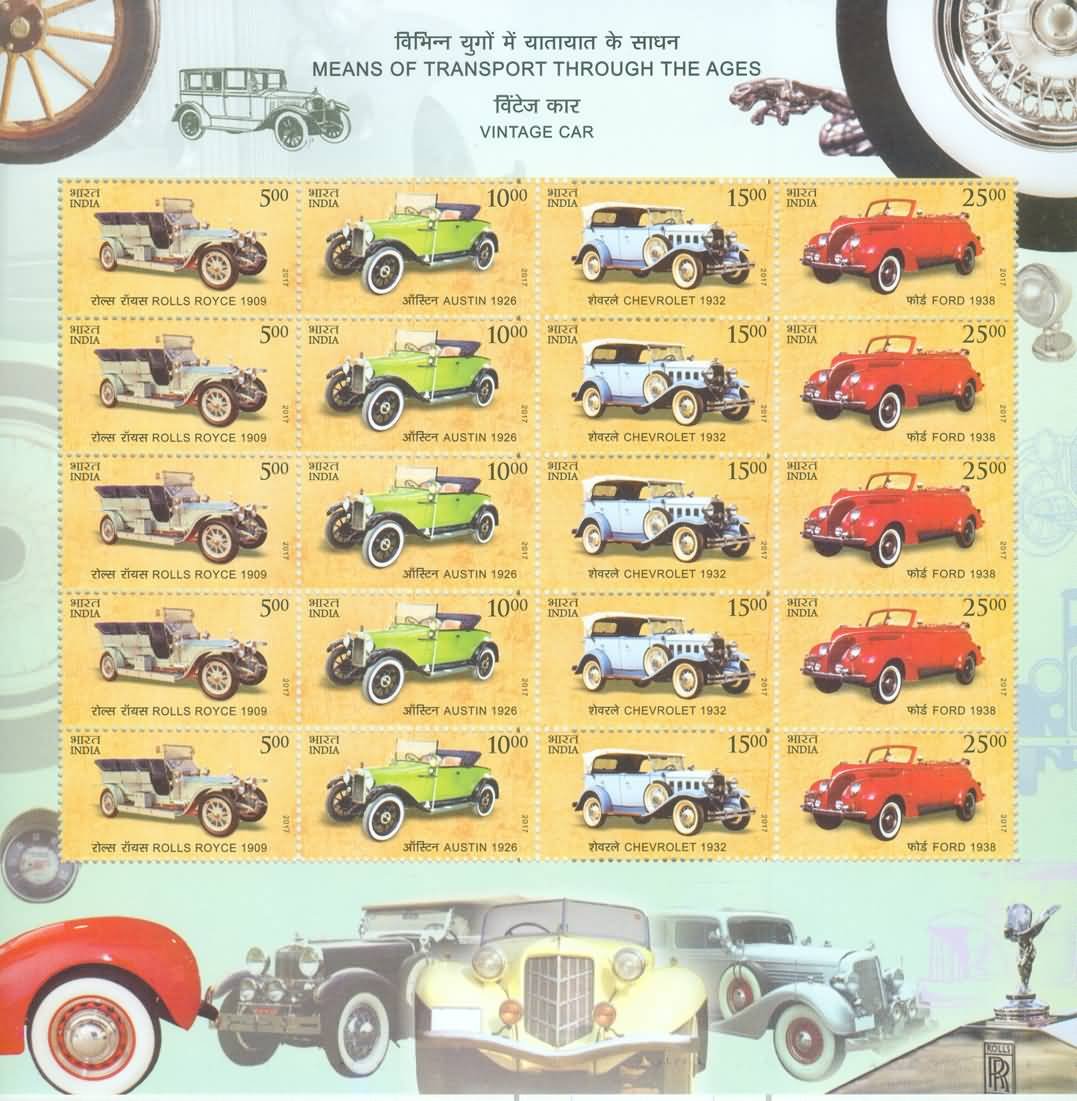Vintage Cars

Technical Data
| Stamp Set | Means of Transport |
|---|---|
| Date of Issue | March 25, 2017 |
| Denomination | Rs. 275 |
| Quantity | 15,000 |
| Perforation | 13 |
| Printer | India Security Press, Nashik |
| Printing Process | Wet Offset |
| Watermark | No Watermark |
| Colors | Multicolor |
| Credit (Designed By) | Sh. Brahm Prakash |
| Catalog Codes |
Michel IN 3139-3142KB |
| Themes | Transport |
Introduction
The arrival of vintage cars in India marked a revolutionary chapter in the evolution of transport. These elegant automobiles, introduced during the late 19th and early 20th centuries, represented technological advancement, luxury, and modernity. Their entry on Indian roads reflected not just mobility, but the beginning of a new era in lifestyle, trade, and societal progress.
Early Introduction in India
The first motorcar appeared on Indian roads in 1898. At the time, cars were imported and were considered symbols of prestige, owned primarily by royalty, wealthy merchants, and British officials. These early cars had unique designs, distinct craftsmanship, and mechanical brilliance, making them prized possessions.
During the years between the two World Wars, local assembly of cars began in major cities like Mumbai, Kolkata and Chennai, further increasing the popularity of automobiles in the country.
Iconic Vintage Car Models
The world of vintage cars is adorned with some historically significant models. Among them, three have earned special admiration:
• Rolls-Royce Silver Ghost
Often called “the best car in the world,” the Silver Ghost is regarded as one of the most valuable vintage luxury cars. Known for its unmatched engineering, smooth performance, and handcrafted elegance, it became a preferred choice of royal households in India.
• Austin Twenty (Austin 20/4 and Austin 20/6)
Introduced after World War I in 1919, the Austin Twenty was a large and dependable family car. Its first model, the Austin 20/4, was later followed by the Austin 20/6 in 1927. Known for strength, comfort, and durability, it gained popularity among Indian motor enthusiasts.
• Chevrolet Series BA Confederate (1932)
Manufactured in 1932, this American model was notable for its stylish design and powerful performance. Despite the economic slowdown of the Great Depression, Chevrolet retained its top rank in car sales, and the Series BA Confederate earned admiration worldwide, including in India.
Cultural Influence and Legacy
Vintage cars were not merely a mode of travel—they represented class, luxury, and a shift in lifestyle. They influenced:
- Royal processions and ceremonial events
- Social reputation and elite status
- The growth of automotive interest and industry in India
Many vintage cars are still preserved by royal families, private collectors, museums, and automobile clubs. They continue to be showcased at vintage car rallies, exhibitions, and heritage events, where enthusiasts celebrate their timeless charm.
Conclusion
The era of vintage cars marked a significant evolution in India’s transport history. These automobiles symbolized elegance, craftsmanship, and technological progress. Though modern cars have replaced them on the roads, vintage cars remain cherished treasures—preserving a golden legacy of style, innovation, and heritage.
